Women 79
A “guajira” with good aim

A “guajira” with good aim
The 25-year-old from Santiago is the captain of the Cuban women’s archery team and is also the best archer in Cuba today
Published: Saturday 29 February 2020 | 10:18:31 pm.
 By Lianet Escobar Hernández lianet@juventudrebelde.cu
By Lianet Escobar Hernández lianet@juventudrebelde.cu
Translated and edited by Walter Lippmann for CubaNews.

With a personal best of 635 points, the Santiago native is aiming for a ticket to the Tokyo Olympics: Author: Abel Rojas Barallobre Published: 29/02/2020 | 09:49 pm
The cry of “guajira” is heard almost constantly in the training area of the women’s national archery team. Everyone knows that when Professor Vladimir Quintas comes to the appellation, he is calling Elizabeth Rodriguez Camilo.
The 25-year-old from Santiago is the captain of the Cuban women’s archery team and does not even wrinkle her face at the adjective that replaces her name, since she knows how fond the word is when it is pronounced by the person who was her first coach when she joined the national team, approximately eight years ago.
Rodríguez Camilo is currently the best goalkeeper in Cuba. This is guaranteed by her status as national champion, a title she has won four times in a row, and also by her results in international tournaments, including two fifth places in the Pan-American Games of Lima 2019, one in the team modality and in the mixed recurve goal.
“For me, as an athlete, it is important to have won the elite tournament of my sport so many times. That’s why I prepare myself all year long, always making my best effort to win. I don’t see the domestic competition as the highest step I have to reach, I think that at the level I’m at I have to aspire to more”, commented the young woman exclusively for JR.
For Elizabeth, that step up is certainly no different than the Olympic Games. The fact that she has never been under the five hoops is a motivation for the youngster who almost achieved her dream four years ago, and now she has the chance to make it happen again.
“For the Rio 2016 Olympics I was just a few inches away from the qualifying event, because my opponent shot very well, in the end, we went to a playoff arrow and he beat me by proximity, so I have a little thorn in my side that I hope to get out of the qualifying fight that will be in the Mexican city of Monterrey, from the 22nd to the 30th of this month.
I hope and can get the Olympic place, although I assure you I would be very happy if another one of us gets it, because that will be great for the Cuban archery. However, contrary to what happens in other sports where the country wins the ticket to the competition and not the athlete, we internally decided that whoever gets the ticket is the one who will be in Tokyo. I think that’s the fairest thing and it’s an additional stimulus that we have,” argued Rodríguez Camilo.
The untamed young woman is one of the few athletes who has the opportunity to share her training and competitions with figures with vast experience in the discipline such as the woman from Matanzas, Maidenia Sarduy, whom she accompanied in what was her first foray outside the country when she was only 18 years old.
I’m lucky enough to be on the same team as Maidenia,” he said. “Her advice, like Larissa Pagan’s, was fundamental. She helped me face my first international experience at a Central American qualifying event for Veracruz 2014, held in Medellin, Colombia, where the World Archery Championship was also held.
“There I was 33rd in individual archery and fifth place in the team. That was a competition that even scared me a little bit because of the high level I had, so it was essential to have the support of those figures,” emphasized Elizabeth.
Perhaps the most difficult thing for the Cuban Artemis is to be away from home, especially from her mother Kenya, who says it is her life and like the rest of the family supports her in all her decisions, including that of leaving the sport if her personal goals are not fulfilled.
“My particular aspiration is to finish this Olympic cycle and complete another one. Although this discipline is very long-lived, where you can be in it for years, I do want to make my family and living so far away does not make things easier for me. If I could put down roots in Havana, something that would allow me to form my family and have my mother with me, then I would gladly continue with bow and arrows under my arm, otherwise, I would say goodbye to it,” she emphasized.
Cuban Guide Addresses Sexual Dysfunctions
IPS in Cuba
Cuba Has a Guide to Address Sexual Dysfunctions
It was one of the results shared at the 5th Scientific and Methodological Conference of the state-run National Center for Sex Education.
February 22, 2020
Translated and edited by Walter Lippmann for CubaNews.
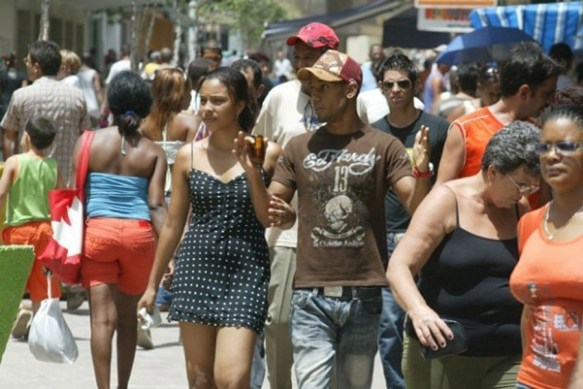
At the conference, it was revealed that guidelines are available to care for those suffering from sexual dysfunctions and disorders in Cuba.
Photo: Jorge Luis Baños/ IPS
Havana, 22 February – What should a doctor tell and guide a man with erectile dysfunction or a woman with an orgasmic disorder? Until very recently, there were no practical guidelines in Cuba for dealing with this health problem.
Today there are guidelines for attending to those suffering from male and female sexual dysfunctions and disorders thanks to a research project carried out by the state-run National Center for Sex Education (Cenesex), explained physician Elvia de Dios Blanco.
From 2016 to 2018, a team of 12 specialists worked on the systematization of the theoretical-methodological references that support care for sexual dysfunctions and disorders in the world and in Cuba, as well as the preparation and evaluation of the guidelines, De Dios said at the 5th Scientific-Methodological Conference of Cenesex.
In the first stage, she said, guidelines were designed for disorders of hypoactive male and female sexual desire, female orgasmic disorder, premature ejaculation and erectile dysfunction, which are the most frequent requests for attention.
In the second phase, guidelines were drawn up for female sexual arousal disorders, pain disorders and vaginismus, as well as paraphilic disorders, he said at the meeting, held Feb. 20, where the institution’s scientific results were presented.
“The ones the one on erectile dysfunction, hypoactive disorder and female orgasmic disorderare published in the Cenesex magazine Sexología y Sociedad. For those pending publication, we coordinated with the Ministry of Public Health to train facilitators for each of Havana’s 15 municipalities, and then extend them to other territories,” she said.
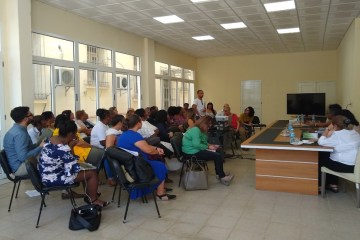
Moments from the day-long scientific conference.
Photo: IPS Cuba Archive
In her opinion, medical professionals are better prepared for male sexual dysfunctions than for female ones, “because really women come very little, they have their problems and they stay with them and don’t come. That happens worldwide, not just in Cuba.
In the expert’s opinion, the Cuban guidelines differ “from the rest of the models that exist internationally in that they include sexual education in all sexual dysfunctions and specify the functions of the integral general physician as a gateway to the health system.
Doctors “must explain to people who seek care the human sexual response, its modifications in the different stages of life, with chronic diseases and with drugs,” he said.
At the same time, she said, sex education should include the presentation of masturbation as a healthy form of sexual activity and the need for privacy in sexual relations.
Education, she insisted, involves making a 20-year-old diabetic man understand that if he doesn’t take his medication, when he is 40 he can develop atherosclerosis, because his fat metabolism is affected, his vessels become hard and blood doesn’t enter his penis.
New paradigms
The conference unfolded a full-day program, where other results and developments were presented.
The Cuban legislative schedule foresees the presentation to the National Assembly of People’s Power (unicameral parliament) of an amendment to the Public Health Law (Law 41 of 1983) by the end of 2020, with a view to moving away from the biomedical paradigm and towards a rights-based approach.
Jurist Ivón Calaña, head of the Legal Advisory and International Relations Department of CENESEX, explained that several groups of specialists are working on different proposals. One concern is that this law must be approved before the new Family Code (planned for 2021), which would leave out some issues, including the autonomy of adolescents in matters of sexuality.
One of the aspects that the health law would include is to clearly specify abortion as a right of women to voluntarily interrupt pregnancy, a procedure that has been available safely and free of charge for more than 50 years in the country.
If the current law referred to quality of health in terms of building care centers, developing the pharmaceutical industry and training personnel, the proposal takes a qualitative leap forward by privileging primary health care as the first level of care for individuals, families and the community in a comprehensive manner.
“From this change, the patient is seen as a subject of rights and duties, because there will be a legal relationship, typical of a service provision, like any other,” he said.
One of the areas analyzed is gender-based violence, which would allow the subsequent implementation of protocols for the care of victims, mainly women and children, she said.
The proposals introduce health concepts that have been absent until now, such as autonomy, integrity, informed consent, privacy, anatomical sex change, the right to decide on the body and obstetric violence, and the right to decide on the number and spacing of children, not only for infertile couples – as is the case in the proposed text – but for all couples.
The long-awaited code
The main advances in the area of sexual rights contained in the proposal of what would be the new Family Code were presented by Manuel Vázquez, deputy director of CENESEX, who is participating in the temporary group working on the text and has had as a good practice to conduct academic debates.
“That a Family Code is proposed, but rather than a name, it is a constitutional mandate in terms of plurality to recognize and protect all families, in all their diversity, regardless of the ways in which they are structured,” he stressed.
Among other aspects, the bill proposes the elimination of the exceptionality to contract marriage before the age of 18, the recognition of marriage and de facto union, the economic regime of marriage, the change of the term parental authority to parental responsibility, the procreational will and multi- and pluri-parenthood. (2020)
Humor, Parody and Other Tricks vs. Patriarchy

Humor, Parody and Other Tricks vs. Patriarchy
Analyses of how women writers and artists describe to the public the continued danger posed in the 21st century by machismo, violence against women, sexual harassment, rape, and even femicide . These have been the focus of a Colloquium at Casa de las Americas (February 17-21) convened by its Women’s Studies Program, created in 1994 and now directed by Dr. Luisa Campuzano.
By Mireya Castañeda
February 23, 2020
Translated and edited by Walter Lippmann for CubaNews.
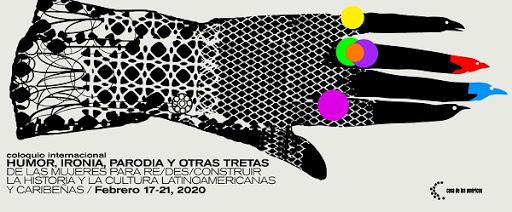
Photo: Taken from the Internet
From literature, theater and cinema, women have decided to expose with weapons as powerful as humor and satire that terrible anachronism that responds to the generic name of patriarchy.
The analysis of how women writers and artists describe to the public the continued danger represented in the 21st century by machismo, violence against women, sexual harassment, rape, and even femicide has been the central theme of a Colloquium at Casa de las Americas (February 17-21) convened by its Women’s Studies Program, created in 1994 and today directed by Dr. Luisa Campuzano.
Under the suggestive and even sarcastic title Humor, irony, parody and other women’s tricks to re/des/construct Latin American and Caribbean history and culture, the Colloquium attracted nearly forty specialists from universities in Canada, the United States, Mexico, Puerto Rico, Chile, Italy, Poland, Portugal and twenty from Cuba.
For our publication, Dr. Campuzano said that the Colloquium was very rich in participation and reiterated that “there is nothing like humor, like parody, irony, to remove anachronistic, ridiculous, and laughable patriarchal prejudices and that battle takes place within literature, the arts, and the theater.
The panels dealt with specific contents such as De cuerpo entero: las décimas y las canciones de Violeta Parra; Las muchachas se diverten. History and political discourse in the Latin American fiction film directed by women, or Women’s humour in political and social cabaret.
Two Cuban examples to appreciate how this serious subject is ironically treated from the stage: the monologue Yaisú by the also narrator Laidi Fernández de Juan performed by Verónica Feria, and a fragment of the piece La cita signed and performed by Andrea Doimeadiós and Verónica Feria.
But in addition to the “tricks” with which Latin American and Caribbean writers and artists put sexism and machismo in check, the Colloquium heard their impact even on many penal codes, including that of Cuba according to one of the presentations, in need of a reform that is planned for 2021 on the island.
The participants are aware of the urgent need to transcend public spaces, a debate of society in general about gender violence, sexual harassment and even cyber-bullying, beyond literature, the performing arts, and academia.
Cuban Film Critic Praises Recent Lesbian Films
 Elisa and Marcela, Marianne and Héloïse, Jean and Lydia
Elisa and Marcela, Marianne and Héloïse, Jean and Lydia
By Julio Martínez Molina
February 8, 2020
Translated and edited by Walter Lippmann for CubaNews
https://walterlippmann.com/elisa-and-marcela-and-more/
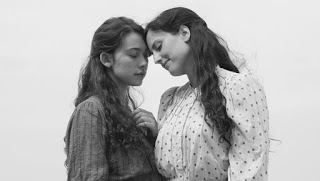
Three very recent films on the international scene, two of them exceptional and one of less artistic importance, are interconnected by both the sensitivity and the tenderness with which they have focused the love between two women. Their stories among the most beautiful provided by this thematic plot in the history of the screen. And to affirm it on a slope that has illuminated masterpieces like Carol and wonders like Disobedience is no small thing.
There are certain gay films with male characters who emulate rabbits in their animalistic urge to fornicate at all times, in any space, with anyone, through the vicissitudes of many bodily fluids and little love. On the other hand, these three stories of lesbian romance stand out in contrast, by celebrating the union of a couple with the understanding of an absolute physical and mental communion, one that dispenses with third parties. Then there’s the finding in the person loved the supreme enjoyment in the physical and spiritual, the acceptance of the other with all its burden of differences, their respect as a human being. This does not imply the overflow of eroticism and passion inherent in every bond that also possesses flesh and desire, manifested in the plots of these three filmic pieces bordered by intense sexual passages.
The first two are the Spanish Elisa and Marcela (Isabel Coixet, 2019) and the French Portrait of a Woman on Fire (Céline Sciamma, 2019); the other is the English The Secret of the Bees (Annabel Jankel, 2018). All of them have been directed by women and perhaps that is where the depth of the formation of the six central characters and their human richness lies; fundamentally the complicity in the approach to their sentimental and moral universes.
Co-written and directed by the Catalan Coixet, Elisa and Marcela, is based on true events that took place in primitive Spain, the first homosexual marriage in the history of that country. It occurred in 1901 by two Galician girls, albeit under the premise of a lie: one of them disguised herself as a man. Although it is still valid today, as they could never undo it, in the absence or flight of their spouses.
Teachers Elisa (Natalia de Molina, in another of the notable compositions of a career in ascent) and Marcela (Greta Fernández, the revelation actress of the moment in the Spanish Peninsula) fight at arm’s length to maintain their relationship in a patriarchal scene of ecclesiastical omnipotence. It is still far from being prepared in the psychological and cultural orders to metabolize such a bond. Misunderstood, rejected and ridiculed, the two young women must leave three countries on two continents in order to continue to be together.
The kernel of the story has to be peeled off in the lyricism by which Coixet approaches a love story. It’s shaped, seen and told from the presupposition of that incomparable beauty arising from loving and honoring being the object of veneration and desire. The intimate scenes of the two central characters are carefully beautiful, and they testify to their mime, to the carnality and spirituality of their passion, to the joint desire to please and love each other; in spite of the hatred and ignorance that hangs over both of them. De Molina and Fernandez, especially the first one, were great.
The visual splendor of black and white photography, great in several shots of interiors, enhances the film.
 Portrait of a Woman on Fire, is sensory as the three previous works of its director, garments the model gradualness through which Sciamma works the romantic attraction of its protagonists. In the first hour of the film, which is calm in its progression and full of details, references and subtleties (those furtive or frontal glances of Héloïse, the lady to be painted, towards Marianne, the painter!
Portrait of a Woman on Fire, is sensory as the three previous works of its director, garments the model gradualness through which Sciamma works the romantic attraction of its protagonists. In the first hour of the film, which is calm in its progression and full of details, references and subtleties (those furtive or frontal glances of Héloïse, the lady to be painted, towards Marianne, the painter!
The two are also in conflict with each other. It was 1770 and the beautiful young bourgeois Héloïse had to be painted, in order to send the canvas to the rich Milanese man who was to marry her. Marianne represents, there is no other, given the time and the conventions, an episode that – although probably the most important thing in her life and never forgotten by her – has to be closed within itself once the lady travels to Italy with her husband.
Noémi Merlant (Marianne) and Adèle Haenel (Héloïse) compose two memorable characterizations. This is decisive in the sense of capturing their characters’ attempt to curb an instantaneous drive and the vehemence with which they accept it and give themselves over to the love affair after realizing how futile the commitment is. The stylization of Portrait of a Woman on Fire is largely due to the observation of the bodies and the close-ups. It’s pure filmic visual poetry that dialogues and transmutes with the pictorial space of the story. Thanks to the mailbox of Claire Mathom, the director of photography.
 Despite being weighed down by dramatic and visually mellifluous decisions in the resolution, as well as appeals to misplaced magical realism and less nuance, The Secret of the Bees is also another tender female story. It is the 1950s in a rural Scotland that does not forgive the “lesbian” Dr. Jean (Anna Paquin, in a work of introversion unaccustomed to the actress in recent times), much less its clandestine union with the young worker Lydia (Holliday Grainger). The relationship between the two, despite their desire for anonymity, will be revealed in the air of a closed atmosphere of intolerance.
Despite being weighed down by dramatic and visually mellifluous decisions in the resolution, as well as appeals to misplaced magical realism and less nuance, The Secret of the Bees is also another tender female story. It is the 1950s in a rural Scotland that does not forgive the “lesbian” Dr. Jean (Anna Paquin, in a work of introversion unaccustomed to the actress in recent times), much less its clandestine union with the young worker Lydia (Holliday Grainger). The relationship between the two, despite their desire for anonymity, will be revealed in the air of a closed atmosphere of intolerance.
In director Jankel’s eyes, this love is marked by tenderness. Although the observation of the two women’s intimate space never reaches the degree of visual sophistication of the films of La Coixet and La Sciamma, such scenes are also very beautiful. Perhaps they are less stylized, but not all of them need to be assumed in such a way.
Chronicle of Harassment Announced

Chronicle of Harassment Announced
 By Dixie Edith
By Dixie Edith
Cuban journalist and professor at the Faculty of Communication of the University of Havana.
On Twitter @Dixiedith
January 16, 2020
Translated and edited by Walter Lippmann for CubaNews.

The pictograms indicate a public bath located in the new recreational space at the intersection of 1st and 70th streets, in the capital city of Playa. Photo: Ariel Terrero.
From a bad joke to sexism is only one step removed. Evidence abounds; it is enough to review, even as the crow flies, various communication spaces, in any format. But what happens when the dubious attempt of a joke, as if that were not enough, makes a crime acceptable?
The question is neither banal nor exaggerated. A few days ago, a group of students from the Communications Department at the University of Havana, had just finished their semester of studies on gender. They were debating via WhatsApp about the photo that accompanies this text. “But what is this?”, some asked. “Doesn’t anyone realize this nonsense?”, asked others.
The photo captured the pictograms that point to a public bathroom located in the new recreational space of the capital’s coast, at the intersection of 1st and 70th streets, in Playa municipality. The figures show a man sneaking a look at a woman, above what looks like the wall that divides the two stalls. And here, the frustrated attempt at a “joke” came and went.
We are no longer talking about old hats: top hats for them and full of flowers or lace for them; or stereotypical film characters showing the gallant and the maiden, the flamenca and the bullfighter. Not even of those other attempts at “creativity” that appeal to phallic symbols, heels or ties, or any other topic tinged with sexism, by the work and grace of the macho tradition that pursues us.
Now we are also witnessing incitement to an act that is punishable under our laws. And, as if this were not enough, it not only positions women once again as the subject – the “natural” victim – of hegemonic masculinity, but also places all men in the position of violators of the law, of victimizers. This is called symbolic violence.
In the opinion of Yamila González Ferrer, a lawyer and expert on gender and family issues, “when what this image is showing occurs, we are dealing with a crime of harassment, provided for in Article 303 of the Criminal Code, which refers to sexual outrage”. But, for her, the most serious thing in this particular case is that “this type of symbolism is used in a public place”.
The aforementioned Article 303 has three subparagraphs, which propose sanctions of up to “three months’ imprisonment” or a “fine of one hundred to three hundred pesos“ for those who harass other persons “with sexual requirements”; offend “modesty or good manners with obscene exhibitions or acts”, or produces or puts into circulation “publications, recordings, cinematographic or magnetic tapes, recordings, photographs or other objects that are obscene, tending to pervert or degrade customs”.
If I were to make a dynamic or evolving interpretation of the law,” says Yamila, “then subparagraph c of that offense of sexual abuse could be applied perfectly well to that case.
Another lawyer, Dr. Arlín Pérez Duarte, agrees with her, in this case an experienced criminal lawyer. In her opinion, this last section applies in this case from what she calls an “analogical interpretation” of the law, since it “appeals to the effects provoked”. The specialist says that, in this matter, “from the point of view of rights, there is a lot of room for improvement”.
For example, criminal implications could be sought from so-called voyeurism or, or as we say jokingly, peeping, which in the eyes of the law is considered a form of outrage or a crime against honor. Although traditionally this type of infraction in Cuba is not punished as a crime, but more as a contravention,. However, in the opinion of the penalist, in this case “it has a greater scope, since it is in an institution that provides a public service”. In other words, it goes beyond affecting an individual person.
The world of signage to label the doors of public toilets and bathrooms serves as a preview of what we will find inside. But it is an soup where multiple proposals are cooked. There are designs that move, between the thorny waters of good and bad taste, the vulgar and really creative. In this unfortunate case, to put more spice to the broth, the half-assed sign also violates Article 40 of the recently approved Constitution of the Republic, which defends human dignity; Article 43, which condemns gender violence in all its forms and Article 48, which defends the right to privacy. And we could continue looking.
Currently, many public discussions around the world are occupied with how to achieve more inclusive signage and urban spaces that do not reproduce those stereotypes that our patriarchal societies have imposed on women and men. There is talk, for example, of unisex toilets, which serve them equally, which would also help not to humiliate or discriminate against other people who have different sexual orientations and gender identities.
If we still find signs like the one in the above mentioned photo, it is clear that we are still far from those other controversies. The unfortunate thing is that the case is not unique. The same students who questioned and argued about the 1st and 70th signs also claimed to have seen similar pictograms in other establishments, especially in the self-employed sector.
As with advertising, urban design, intentionally or not, helps to perpetuate ideas through graphic codes and creative nods. And because machismo is so naturalized in our lives, we often find it hard to identify that behind those seemingly innocent jokes is a deeply violent, threatening message that, according to García Márquez, could become the advertised chronicle of a crime of harassment.
Tina Modotti, 20th Century Photographer

Tina Modotti was one of the most important photographers of the 20th century
By Hortensia Hernández
Friday, January 5, 2018
Translated and edited by Walter Lippmann for CubaNews
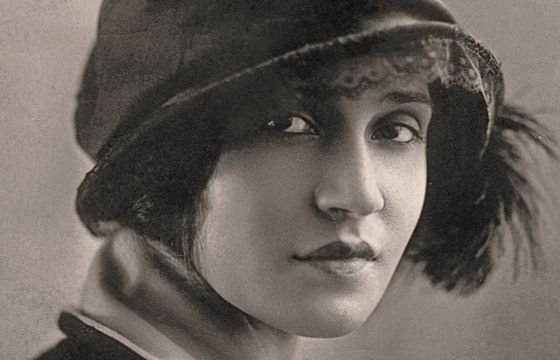
Considered one of the most important photographers of the 20th century, Tina Modotti (Udine, Italy; August 17, 1896 – Mexico City, Mexico January 5, 1942) was a communist militant and worked for the party in Mexico, the Soviet Union, Spain, Germany and Italy. Self-taught, she spoke four languages and learned the photograph trade from the famous photographer Edward Weston.
She was a woman with a short but intense life who surely went much further than she could have imagined when she was going through a childhood full of hardships, in Udine, northern Italy. She had to work from the age of 12 as a textile factory worker to help her mother provide for herself and her siblings while waiting to raise money to catch up with her father and older sister, who had migrated to the United States city of Los Angeles
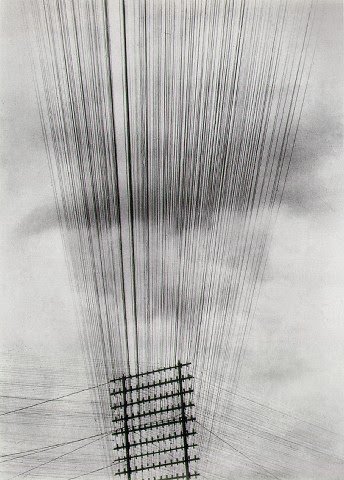
In North America, Modotti worked as a dressmaker and, in her spare time, performed within an amateur theater group. She got some roles in Hollywood silent films, an activity that could not last after the arrival of the sound cinema, which would reveal her bad English and strong Italian accent.
When she was very young, she married a poet and painter, but she soon became a widow. This brought her closer to the artistic world and it was there that she met the photographer Edward Weston. With him she first worked as a model and then as an assistant, learning how to handle the camera and the developing process and taking her first steps as a photographer.
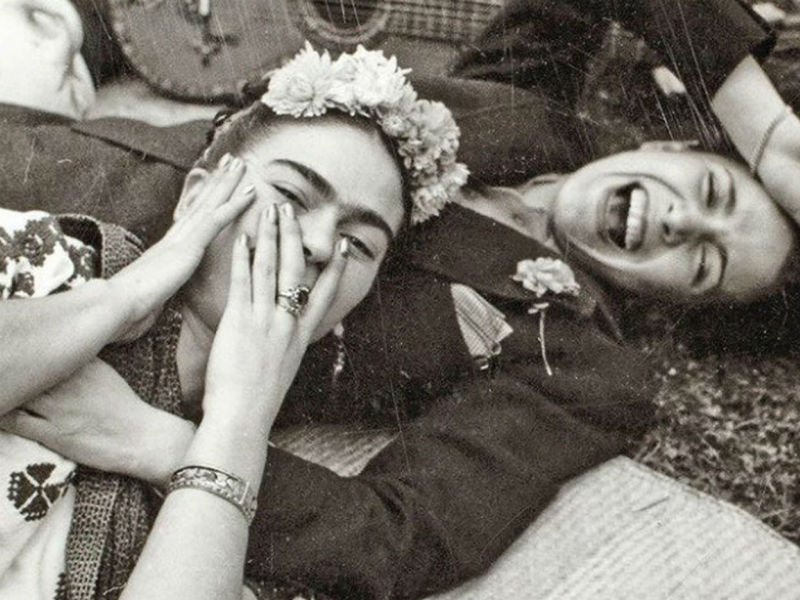
Modotti and Weston became a couple and moved to Mexico. There, through photography, which portrays a people in the midst of a revolutionary upheaval, they approach what would be their other great passion: politics.
Her love life united her with three successive communist leaders: Mexican Xavier Guerrero, who was Rivera’s assistant. They formed part of the revolutionary movement through the Mexican Union of Artists (UMA), made up of Diego himself, Manuel Álvarez Bravo, Charles Chaplin, David Alfaro Siqueiros, Frida Kahlo and others.

In 1928, she met Julio Antonio Mella, a member of the Cuban Communist Party, with whom she worked in the “Hands Off Nicaragua” committee, for the freedom of Antonio Gramsci, the Argentinean leader Rodolfo Ghioldi, and in the collection of signatures for the freedom of Nicolás Sacco and Bartolomeo Vanzzeti. Mella was murdered a year later and Modotti was expelled, accused of being an accomplice to the attempted assassination of Mexican President Pascual Ortiz Rubio.
Her third partner was the Italian Eneas Sormenti, with whom she became a member of the first Italian anti-fascist committee. They met in Mexico and met again in Moscow, where both were members of the Communist Party.

The Mexican writer Elena Poniatowska, in her biography of Modotti, entitled “Tinísima”, describes her as “a subject in search of a militant and documentary art, which tries to reconcile the aesthetic and political vanguard. A woman in search of identities through all kinds of instruments: the gaze, the word and the action”.
Tina died on 5 January 1942 of a heart attack while traveling in a taxi, although there is also the suspicion that she may have been murdered. On her tombstone in Mexico City’s cemetery is a verse dedicated to her by Pablo Neruda.
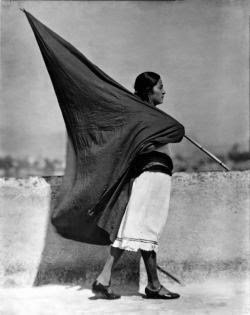
Assunta Adelaide Luigia Modotti, better known as Tina Modotti, at the age of 17 emigrated to the United States to catch up with her father and older sister, who already lived there. In 1921s she met Edward Weston and in 1922 she arrived in Mexico to bury her first husband Roubaix de L’Abrie Richey. In Mexico, she met and became close friends with Diego Rivera, David Alfaro Siqueiros, Blanca Luz Brum, Nahui Ollin, Maria Tereza Montoya and Frida Kahlo. she became a member of the Mexican Communist Party in 1927. She actively supported the struggle of Augusto Cesar Sandino and helped found the first Italian anti-fascist committee. In 1928 he met Julio Antonio Mella, a Cuban student leader, when the committee in support of the anarchists Sacco and Vanzetti was formed.

She was known for her controversial nude photos and for the particular look she reflected in the photographs she took of Mexico. She would later witness Mella’s murder. In 1930, she was falsely accused of conspiring to assassinate Pascual Ortiz Rubio, then president of Mexico, for which she was arrested. Thanks to Diego Rivera’s help, she was released but expelled from the country.
She arrived in Germany in the mid-1930s, traveled to the Soviet Union and met again with Vittorio Vidali, whom she had met in Mexico. She participated in the International Red Relief. In 1934 she left for Spain. During the Spanish Civil War, she enlisted in the Fifth Regiment and worked in the International Brigades, under the name of Maria until the end of the war. Margarita Nelken, in one of the several praises given to her activity, tells how she cared for the children who arrived in Almeria after the exodus from the town of Malaga which was harassed during the journey on foot by the bombing of the Franco forces.
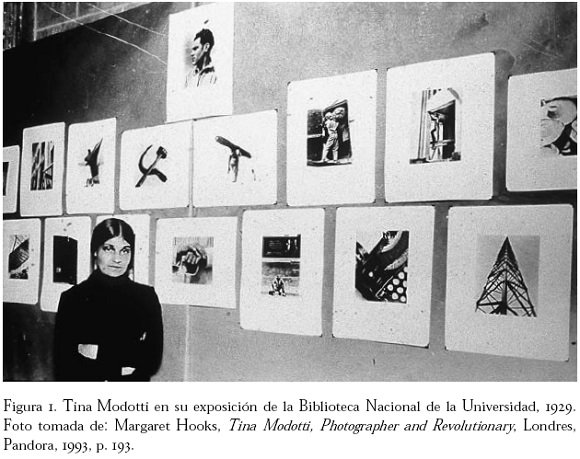 Figure 1. Tona Modotte at her exhibtion in the National University Library, 1929. Photo taken from Margaret Hooks, Tine Modotti, Photography and Revolutionary, London, Pandora, 1993)
Figure 1. Tona Modotte at her exhibtion in the National University Library, 1929. Photo taken from Margaret Hooks, Tine Modotti, Photography and Revolutionary, London, Pandora, 1993)
In 1939 she returned as an asylum seeker to Mexico, where she continued her political activity, through the Giuseppe Garibaldi Antifascist Alliance . In 1940, President Lazaro Cardenas canceed her expulsion. She died on January 5, 1942. In the book “Tina”, Pino Cacucci mentions a possible murder of Tina Modotti, which has always been a controversy since there was no autopsy.
Along with Weston, she was a mentor to Mexican photographer Manuel Alvarez Bravo. Mexican writer Elena Poniatowska wrote a biographical novel entitled “Tinísima”. Victor Hugo Rascon Banda wrote a play called “Tina Modotti”.
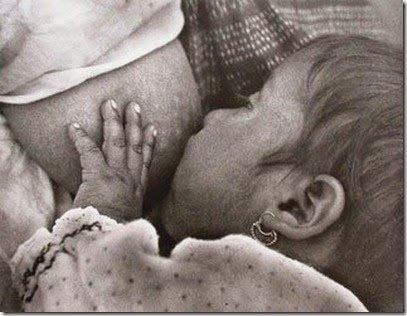 Modotti’s interest in her work was a reflection of her ideological commitment to the most vulnerable social groups. She worked as an editor and photographer for the magazine Mexican Folkways and the newspaper El Machete in 1924, and this work would lead her to be considered as a precursor of critical photojournalism in Mexico. Achieving an immediate identification with Mexico and its inhabitants that is reflected in her work.
Modotti’s interest in her work was a reflection of her ideological commitment to the most vulnerable social groups. She worked as an editor and photographer for the magazine Mexican Folkways and the newspaper El Machete in 1924, and this work would lead her to be considered as a precursor of critical photojournalism in Mexico. Achieving an immediate identification with Mexico and its inhabitants that is reflected in her work.
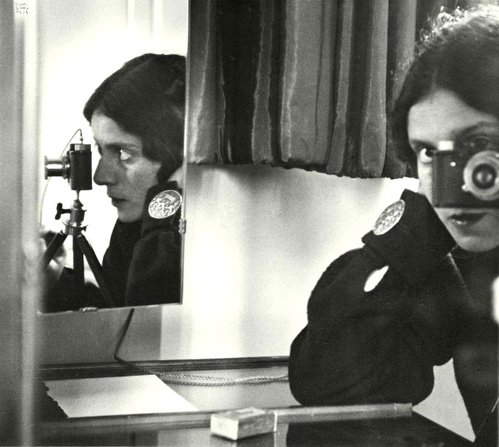
Her work was captured by artists such as Diego Rivera and José Clemente Orozco, who between the years 1927-1930 entrusted her with the task of photographing their works. This work represents]ed a certain historical value, which testifies to the realization of the works of these two Mexican muralists.
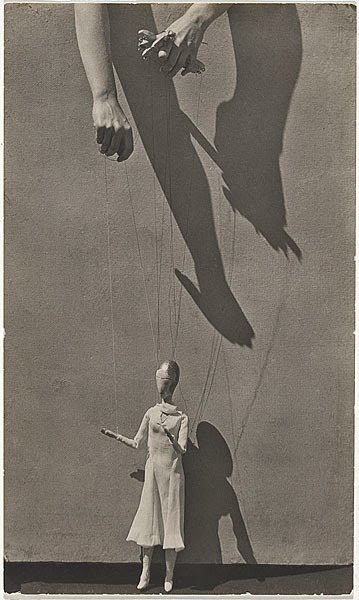 According to Manuel Álvarez Bravo, Tina Modotti had two periods: the romantic and the revolutionary. In the first, influenced by Weston, where she photographed flowers, objects and architectural details and the second emerged in Mexico, beginning her relationship with the Mexican muralist movement. She aimed to portray the work of these artists emphasizing details such as workers and indigenous people, in addition to her independent work, capturing images of indigenous and mestizo people and documenting the social struggle of the less privileged with great care in the composition and assembly of the scenes, but without poses or forced attitudes.
According to Manuel Álvarez Bravo, Tina Modotti had two periods: the romantic and the revolutionary. In the first, influenced by Weston, where she photographed flowers, objects and architectural details and the second emerged in Mexico, beginning her relationship with the Mexican muralist movement. She aimed to portray the work of these artists emphasizing details such as workers and indigenous people, in addition to her independent work, capturing images of indigenous and mestizo people and documenting the social struggle of the less privileged with great care in the composition and assembly of the scenes, but without poses or forced attitudes.
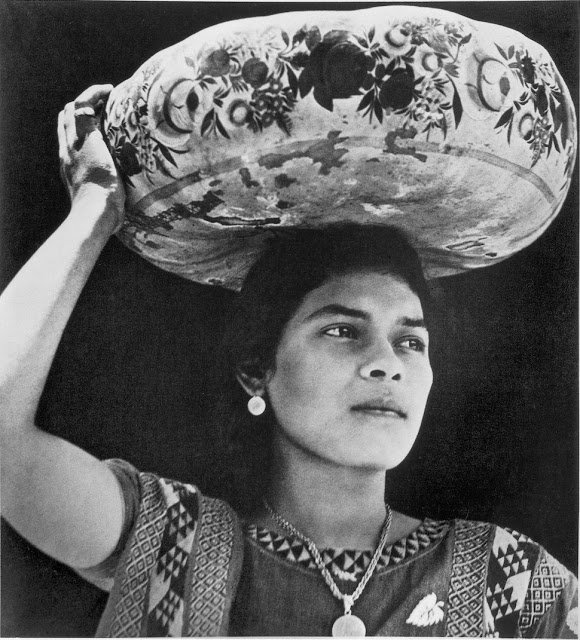 There is a period of transition in which she produced some of her most memorable photos, such as the hands of a farmer holding a shovel or the hands of a washerwoman.
There is a period of transition in which she produced some of her most memorable photos, such as the hands of a farmer holding a shovel or the hands of a washerwoman.
Women and Anti-Wrinkle Cream

Woman Falls into Coma After Using Anti-Wrinkle Cream
The affected person’s body contained abnormally high levels of methylmercury, a highly toxic element that can cause permanent damage to the nervous system
By Juventud Rebelde digital@juventudrebelde.cu
Published: Saturday 28 December 2019 | 09:25:37 am
Translated and edited by Walter Lippmann for CubaNews.

California Toxic Face Cream Alert Author: Twitter Posted: 28/12/2019 | 09:22 am
WASHINGTON, December 28.- A Sacramento woman was poisoned by a skin cream, leaving her in a coma. Hers was the first reported case of methylmercury poisoning in the United States, reports the Center for Disease Control and Prevention (CDC).
The 47-year-old woman visited a doctor in July of this year for a strange burning sensation and weakness in her arm. When she returned two weeks later with blurred vision and difficulty speaking, doctors admitted her to a University of California, San Francisco, hospital.
Then her condition quickly worsened into a delirious rage, as described by Dr. Paul Blanc of the California Division of Environmental Medicine and Poison Control System, CNN reports.
Her body contained abnormally high levels of methylmercury, he wrote. Methylmercury is highly toxic and can cause permanent damage to the nervous system, Blanc said. The CDC report indicates that her injuries are probably permanent.
The woman is now in a coma after using a mercury-contaminated face cream brought in from a Latin American country through an informal network. She used the toxic cream for years, the source said.
Her family explained to health officials that she used a skin-lightening cream, allegedly called Pond’s Rejuveness, twice a day for the past seven years. The woman acquired the cream through friends. The product is also used to remove blemishes and wrinkles.
Experts tested the cream and found that it contained 12,000 parts per million of methylmercury. The damage methylmercury inflicts on the nervous system often worsens after patients stop using or consuming contaminated products.
The condition of the patient, whose name was not published, continued to deteriorate even after she underwent chelation therapy, a treatment to remove mercury through the urine.
Rifles with Women’s Names

Rifles with Women’s Names
The women of Pinar del Río spoke about the role of Cuban women in the defense of their country during the parliamentary hearing on Women’s Voluntary Military Service, sponsored by the Committee on Defense and Internal Order of the National Assembly of People’s Power
By Zorileidys Pimentel Miranda
November 26, 2019
Translated and edited by Walter Lippmann for CubaNews..
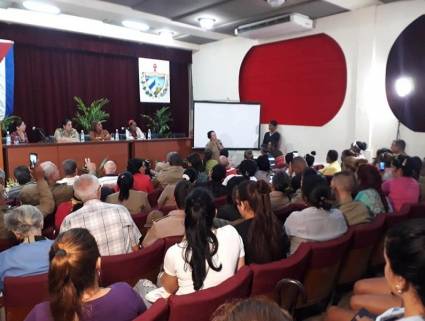
In the audience it was revealed that in the Women’s Voluntary Military Service duty and opportunity are combined for many young women Author: Zorileidys Pimentel Miranda Published: 26/11/2019 | 10:43 pm
PINAR DEL RÍO: The Women’s Voluntary Military Service (SMVF) is still a taboo in some Cuban families. Getting used to the boots, the olive green uniform, the backpack, the guards, the hikes, the days in the field, is very hard for women, according to many people.
However, there are families who are grateful that their daughters are living this experience. This was evident during the parliamentary hearing on the SMVF held on Tuesday in Pinar del Río, sponsored by the Committee on Defense and Internal Order of the National Assembly of People’s Power (ANPP).
The testimony of Odalys Orraca Castillo, mother of a young woman who was a member of the Border Brigade in Guantanamo, reached the audience. “It is always difficult to accept that a son is going to walk away. In our case, we already knew that our daughter was willing to comply with the SMVF and therefore there was an acceptance and we were all convinced that this was the best thing for her.
“The separation was difficult, but we remained calm because we always knew that they were well cared-for in every way. In the first two months after starting military service, my daughter told me: “Mom, don’t cry or worry anymore, because we are very happy; it is true that we have to work and do all the activities, but we also have fun, we have a good time, and above all, we learn a lot”.
Like this one, other stories came to the parliamentary hearing, which was attended by fighters of the Revolution, cadets, family members and representatives of various organizations and institutions from the territory.
Such was the case of Yusleidys Hernández Hernández, a member of the National Committee of the Young Communist League (UJC), who, for six months, learned what life is like in a military unit. “It was a unique experience for me. It contributed a lot to my training. Now I am more disciplined and consistent with the tasks of the Revolution. I feel great pride and satisfaction in being prepared to defend the country in any circumstance,” she said.
Then, she added that from the UJC, together with the Federation of Cuban Women, “We carried out exchanges in the educational centers, we showed videos about women who have lived this experience, we talked with the parents and we had concrete results.
For her part, Yilena Valdés Llano, a 19-year-old who finished her military service last August, said it was a 12-month apprenticeship. “I reached an incredible degree of maturity, it also taught me about military life, everything I need to know to defend the country. In addition, I was able to study and today I am in the first year of my degree in rehabilitation, something I am very passionate about.
Also participating in the hearing was Major General José Antonio Carrillo Gómez, president of the Defense Committee of the ANPP and of the Association of Combatants of the Cuban Revolution, who reiterated that at present, along with the economy, defense continues to be the great task of all Cubans to maintain our social system.
Emma Thompson: “I’m an Atheist”
El País [Spain] Emma Thompson: “I’m an Atheist Because Religion Oppresses Women
The acclaimed actress continues to fight for wage equality and transparency in the industry of which she is a part
By ROCÍO AYUSO
November 24, 2018
Translated and edited by Walter Lippmann for CubaNews.

Emma Thompson, during the premiere of ‘The Verdict’ last August GTRESONLINE
Emma Thompson is good at everything she does. She rose to fame as an actress, a passion that earned her an Oscar with Howards End (1992). She also has an Oscar as a writer, adapting Jane Austen’s Sense and Sensibility (1995) to the screen. And as an activist she never shuts up. She fights for equality and transparency in wages in the industry of which she is a part. Moreover, she personally takes on the causes she believes in, as demonstrated by the adoption of Tindyebwa Agaba, formerly a child soldier from Rwanda.
The proximity of the 60’s does not stop this Londoner, a declared atheist and Greenpeace advocate. She went in slippers to her appointment as a lady and whose last job, a Christmas advertisement to which she has given her voice, has been banned from Icelandic television. The spot tells the story of a little orangutan named Rang-tan who walks into a girl’s bedroom after escaping the destruction of the forest by palm oil traders. Thompson, married to fellow actor Greg Wise and mother of a daughter, Gaia, is now releasing The Verdict, a film based on the novel by Ian McEwan in which she plays a British High Court judge who has to make important decisions about her life and that of a child.
QUESTION. As much as you are judged as an actress, are you also judgmental?
ANSWER. Only when you sit in the place of the judges in a courtroom, up there, do you realize how easy it is to judge from that position. How easy it is to feel above everyone.
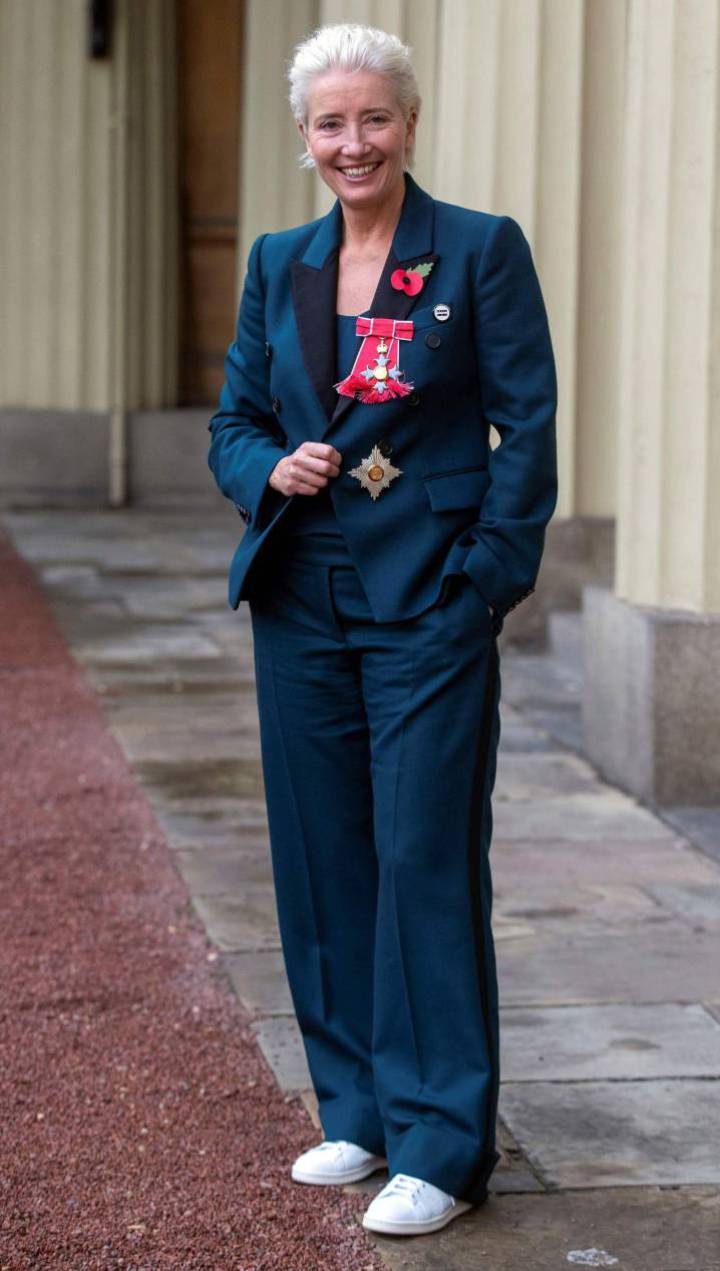
Emma Thompson, on her appointment as Lady of the British Empire, November 8. AFP
Q. And as a star, is it also easy to feel above everyone?
A. I guess it’s easy and I make those mistakes too. But my family takes care of taking me down a peg. When you enjoy a position like mine, it’s good to go shopping for milk once in a while. And I do. I’m sure I’m a bit of a brat or a spoiled brat sometimes. But at home I do the cooking, the shopping, and I’ve cleaned a few bathrooms. I try to keep my feet on the ground, but of course I’m very spoiled because I have a personal assistant without whom it would be impossible for me to do what I do.
Q. This year alone you have collaborated in a television series (Upstart Crow), in a television film (King Lear), you have done several voice works and you have two premieres, Johnny English Strikes Again and now The Verdict. What do you do when you have a couple of hours free?
A. I sleep (laughs). I’d say I go to the movies, but there are no movies that last two hours anymore. I’m not much of a TV watcher either even though I saw The Crown in one sitting. If I have two hours, I read. I like historical novels like Philippa Gregory’s or the work of that great feminist writer Rebecca Solnit.
Q Her defense of equality, of feminism, predates the #MeToo movement. Have things improved in any way?

Emma Thompson, during the climate change march in London, UK, in 2015. G3ONLINE
A. They change and don’t change. Above all, I am a feminist who believes in women’s rights and equality. And it is impossible for me to feel sympathy or faith in any institution that systematically oppresses women. That is why I am an atheist. Because religion has a long history of oppressing women.
Q. One of your latest works has been an announcement for Greenpeace that has reignited the controversy. This is not your first collaboration with the environmental organization.
A. I have a very close relationship with Greenpeace. I have travelled with them twice to the Arctic and next year we will work together again. They are a very effective organization partly because of their political stance, because they don’t mind breaking the law and using civil disobedience if it brings attention to the problems that we are facing. We are as hooked on non-renewable energy as we are on tobacco. And the easiest and quickest solution to many of our problems is a boycott.
Q. The UK is going through a difficult time with the implementation of Brexit. How is it going in the final stretch?
A: The world must think we have lost our minds. The results plunged me into grief because I was born 14 years after the end of World War II. I still remember the feeling of loss in London, in a Europe traumatized by both wars. The idea of breaking up the union makes me sad. But you have to realize that many people are disenchanted with the system. Those who feel ignored by our government or by the union of European countries. So what is born now has to be a new union, a better one. I prefer to think that this is a good time for something new to be born. I take comfort in that thought.
Violence Against Women

Violence against women is much more than physical or sexual
By Amelia Duarte de la Rosa
November 25, 2019
Translated and edited by Walter Lippmann for CubaNews.
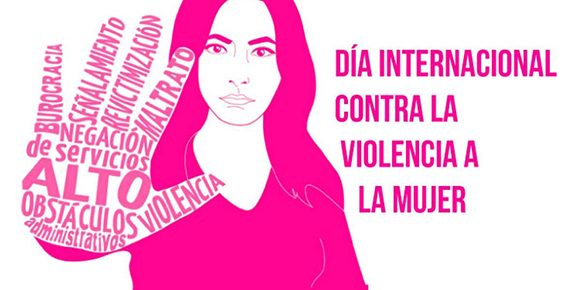
nuevamujer.com
The world commemorates this November 25 International Day for the Elimination of Violence against Women, even though one in three women on the planet suffers physical or sexual violence.
However, the term “Violence Against Women” coined by the UN in 1993, encompasses many types of attacks beyond physical, sexual or psychological, and also has to do with any threatening act, whether it occurs in life public as in private.
Many women in the world suffer from labor and political violence as an inalienable part of gender inequality and lack of equal rights for women and girls.
Among the highest rates of gender violence worldwide are found in the Pacific region, the Middle East and Africa, where although physical or sexual rape has a higher incidence, the female population is unprotected in terms of economic empowerment, political leadership and inclusion.
According to the United Nations Annual Report 2017-2018, women remain trapped in a network of inequalities that place them in the worst part of unpaid care, social protection and insecurity.
Gender disparities also intersect with gaps in education, income and access to services, as well as ethnicity, sexual orientation and geographic location.
In addition, women and girls are particularly vulnerable in education, which prevents them from achieving universal schooling and having more employment opportunities.
Harassment, discrimination at work and psychological aggressiveness also affect them as victims, because women are exposed to strenuous work schedules, low earnings, difficult conditions and an increased risk of violence.
UN Women data shows that one in 10 women in the European Union declares that they have suffered cyber-bullying since the age of 15. This includes unwanted, sexually explicit and offensive emails or SMS [text] messages, or inappropriate and offensive attempts in the social networks, which are positioned as the main means through which this psychological violence is exercised.
Meanwhile, a study conducted in 27 universities in the United States revealed that 23 percent of university students are victims of sexual assault or sexual misconduct.
For its part, Africa is one of the most restrictive continents in terms of women’s rights and it is estimated that millions of them have been subjected to female genital mutilation.
In addition, it leads the ranking as the region with the least safe abortions in the world, followed by Oceania and Latin America, which takes thousands of lives each year.
It is believed that only one in four abortions is carried out in safe conditions.
UN Women implements an aid plan in several countries to close these gender gaps and create counseling centers for survivors of violence.
In addition, some governments develop economic empowerment plans to counter violence against women, such as in Japan, which, for example, approved paternity leave to allow the professional development of mothers.
However, all action continues to seem useless when, UN data confirms that 71 percent of victims of trafficking worldwide are women and girls, and one in two women in 2017 was killed by their sentimental partner or a member of their family.
(Taken from PL)
Subscribe to Blog via Email
| M | T | W | T | F | S | S |
|---|---|---|---|---|---|---|
| 1 | 2 | 3 | 4 | 5 | 6 | 7 |
| 8 | 9 | 10 | 11 | 12 | 13 | 14 |
| 15 | 16 | 17 | 18 | 19 | 20 | 21 |
| 22 | 23 | 24 | 25 | 26 | 27 | 28 |
| 29 | 30 | |||||


You must be logged in to post a comment.